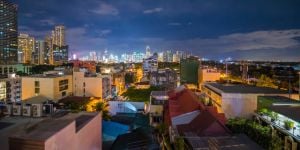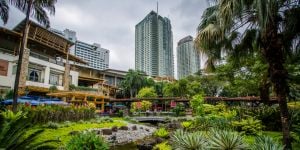
Do you need a visa and other requirements to travel to the Philippines? Here is your step-by-step guide for entry and extending your stay.
If you intend to travel to the Philippines, it is best to find out the initial formalities and procedures. It is important to know whether you need a visa to travel since nationals of certain countries are exempted from this requirement.
Travel requirements for the Philippines
In general, foreign nationals travelling to the Philippines need to present the following:
- passport, which should be valid for at least six months following your trip to the Philippines;
- unexpired entry visa (unless you're visa exempt);
- validly-issued return ticket to the place of origin or ticket to the next port of origin (unless you're a permanent resident or a holder of a valid ACR I-Card).
- Register and complete the eTravel Portal (replacing the former One Health Pass). This can be done within 72h before arrival or upon arrival at the latest.
- Proof of complete vaccination against COVID-19
Under Operations Order No. SBM-2015-026, nationals of the following countries may be admitted into the Philippines with passports of less than six (6) months validity from the date of arrival:
Angola, Argentina, Australia, Austria, Belgium, Benin, Brazil, Cambodia, Canada, Chile, Cyprus, Ecuador, France, Germany, Greece, Iceland, Indonesia, Ireland, Israel, Italy, Japan, Korea, Kuwait, Laos, Mexico, Myanmar, Netherlands, New Zealand, Niger, Papua New Guinea, Peru, Portugal, Romania, Saudi Arabia, Singapore, Spain, Switzerland, Thailand, Turkey, United States of America, and Venezuela.
Good to know:
Since April 2023, there has been no more quarantine or Covid-19 test required to enter the Philippines for fully vaccinated travelers, provided they meet the following requirements to travel to the Philippines:
Travelers must have proof of full vaccination against Covid-19. Accepted proof of vaccination includes any of the following documents:
- WHO (World Health Organization) International Certificate of Vaccination and Prophylaxis
- VaxCertPH
- National or State digital certificate of the country/foreign government which has accepted VaxCertPH under a reciprocal arrangement
- Other proof of vaccination permitted by the IATF (Inter-Agency Task Force for the Management of emerging infectious diseases in the Philippines)
There have been no guidelines given regarding Covid-19 booster shots nor the expiration of vaccinations.
The Philippines visa
The Philippine visa is a sticker affixed on the passport endorsed by the Philippine Embassy or Consulate in your home country. However, having obtained a visa does not guarantee admittance into the country. This will ultimately be determined by the Bureau of Immigration (BI) official at the port of entry.
Nationals of the countries listed below can travel to the Philippines without a visa for business and tourism purposes.
For a maximum of 59 days:
Brazil and Israel.
For a maximum of 30 days:
Andorra, Angola, Antigua and Barbuda, Argentina, Australia, Austria, Bahamas, Bahrain, Barbados, Belgium, Belize, Benin, Bhutan, Bolivia, Botswana, Brunei, Bulgaria, Burkina Faso, Burundi, Cambodia, Cameroon, Canada, Cape Verde, Central African Republic, Chad, Chile, Colombia, Comoros, Congo (Democratic Republic of Congo), Costa Rica, Croatia, Cyprus, Czech Republic, Denmark, Djibouti, Dominica, Dominican Republic, Ecuador, El Salvador, Equatorial Guinea, Eritrea, Estonia, Ethiopia, Fiji, Finland, France, Gabon, Gambia, Germany, Ghana, Greece, Grenada, Guatemala, Guinea, Guinea Bissau, Guyana, Haiti, Honduras, Hungary, Iceland, Indonesia, Ireland, Italy, Ivory Coast, Jamaica, Japan, Kazakhstan, Kenya, Kiribati, Korea (Republic of Korea), Kuwait, Laos, Latvia, Lesotho, Liberia, Liechtenstein, Lithuania, Luxembourg, Madagascar, Malawi, Malaysia, Maldives, Mali, Malta, Marshall Islands, Mauritania, Mauritius, Mexico, Micronesia, Monaco, Mongolia, Morocco, Mozambique, Myanmar, Namibia, Nepal, Netherlands, New Zealand, Nicaragua, Nigeria, Northern Ireland, Norway, Oman, Palau, Panama, Papua New Guinea, Paraguay, Peru ,Poland ,Portugal ,Qatar, Romania, Russia, Rwanda, Saint Lucia, Saint Vincent and the Grenadines, Samoa, San Marino, Sao Tome and Principe, Saudi Arabia, Senegal, Seychelles, Singapore, Slovakia, Slovenia, Solomon Islands, South Africa, Spain, St. Kitts and Nevis, Suriname, Swaziland, Sweden, Switzerland, Tajikistan, Tanzania (United Republic of Tanzania), Thailand, Togo, Trinidad and Tobago, Tunisia, Turkey, Turkmenistan, Tuvalu, UK, USA, Uganda, United Arab Emirates, Uruguay, Uzbekistan, Vanuatu, Vatican, Venezuela, Vietnam, Zambia, and Zimbabwe.
For a maximum of 14 days:
Holders of Special Administrative Region (SAR - Hong Kong and Macau) passports.
For a maximum of 7 days:
Holders of Macau-Portuguese and Hong Kong British passports.
Good to know:
Foreigners who have been deported or blacklisted by the DFA and the BI are not allowed to enter the Philippines.
Who needs a visa to stay in the Philippines?
If you're a national of a country listed above, but your stay exceeds the maximum visa-exempt days, you will need a visa to stay in the Philippines.
On the other hand, if you are already in the Philippines and you wish to extend your stay beyond the allowed visa-exempt days, you can apply for an extension with the BI. You are required to present the following documents:
- original passport;
- two duly accomplished for Tourist Visa Extension; and
- notarized sworn statement for overstaying/updating of stay of more than six months.
Fees vary depending on the number of months of extension. Note that non-visa-required nationals are allowed to extend their stay for up to 36 months. Make sure to start the application for an extension at least one week before the expiration of your valid stay.
If you're a national of a country not listed above, you will need a visa to extend your stay in the Philippines. Your next step would be to identify which type of visa you need to apply for.
Extending your visa or authorized stay in the Philippines beyond the allowed term
A foreign national whose stay in the Philippines will exceed the allocated first visa should secure extensions of stays with the Bureau of Immigration Office.
Extension of authorized stay beyond 59 days
Secure the CGAF (Consolidated General Application Form) from your nearest Bureau of Immigration Office or the official BI Website. You will then proceed as follows:
- Submit the completely filled-out application form and attachments together with the passport to the helpful frontline officer.
- If the applicant has no derogatory records, a BI Clearance Certificate shall be issued. Otherwise, the applicant must proceed to the Verification and Certification Unit for Clearance.
- Get the Order of Payment Slip and proceed to Cashier for payment.
- Pay the fees and get the Official Receipt.
- Submit the Official Receipt with the application form, attachments and passport to the receiving/assessment Officer.
- Claim the passport stamped with the requested extension of stay.
Fees depend on where the foreign national came from.
International airports in the Philippines
The Philippines is an archipelago of 7,641 islands that are categorized broadly under the three main geographical divisions from north to south: Luzon, Visayas and Mindanao
Each main island has an international airport. It's therefore important to know which airport is closest to your destination.
Ninoy Aquino International Airport (NAIA)
NAIA is the Philippines' largest airport and is one of the two international airports serving the Metro Manila area. The Manila International Airport Authority (MIAA), which manages NAIA, recorded a total of 10,855,332 passengers in the first three months of 2023, a 158% increase over the 4,200,575 passengers that travelled through the country's primary gateway in the first three months of 2022.
Clark International Airport CRK
Located in Pampanga, at the heart of Central Luzon, CRK caters mostly to low-cost carriers that avail themselves of the lower landing fees than those charged at NAIA. It is easily accessible by shuttle bus from various points of Metro Manila.
Puerto Princesa International Airport
This airport serves the general area of Palawan. Currently, its only international destinations are Busan and Seoul Incheon, South Korea.
Mactan-Cebu International Airport
Serves Metro Cebu and Central Visayas and is the Philippines' second busiest airport.
Subic Bay International Airport
This airport's international destinations are mostly in Asia, except for Los Angeles.
Davao International Airport
The busiest airport in Mindanao (the southern area of the Philippines) is located in Davao. It is currently serving 7 airlines and handling from three to four million passengers annually.
Iloilo International Airport
Iloilo Airport's international destinations include Hong Kong and Singapore.
Kalibo International Airport
Non-stop flights to and from Kalibo Airport are currently being offered by carriers to and from Kuala Lumpur, Seoul, Busan, Hong Kong, and Singapore.
Useful links:
Philippine Department of Foreign Affairs
Manila Ninoy Aquino International Airport
Mactan Cebu International Airport
We do our best to provide accurate and up to date information. However, if you have noticed any inaccuracies in this article, please let us know in the comments section below.







Comments
1good information